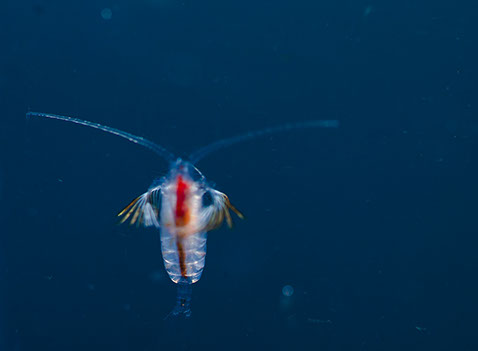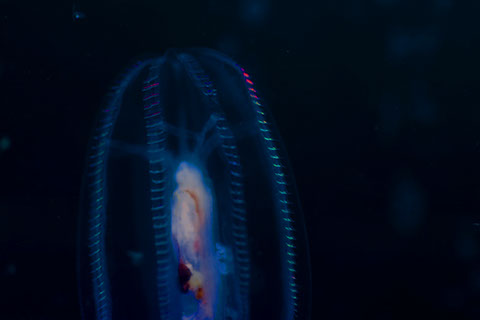What are plankton?

Plankton are organisms that float with the ocean currents. Plankton can be found in all of the world's oceans, lakes, and rivers. Most plankton are tiny, but some (including jellies) can be large. Plankton are incredibly diverse and have many different ecological roles. Phytoplankton (or algae) are the "plants" of the open ocean. They are single-celled organisms that conduct photosynthesis. They are thus autotrophs that make their own food from sunlight, nutrients, and carbon dioxide. Phytoplankton are responsible for roughly half of the world's photosynthesis and hence half of the oxygen that we breathe.
Zooplankton are the tiny "animals" of the open ocean (although not all are in the kingdom Animalia; some are protists). Zooplankton are heterotrophs that get their energy from feeding on phytoplankton, bacteria, other zooplankton, or even non-living material in the ocean. Zooplankton include single-celled protists (that are sometimes referred to as microzooplankton). The metazoan (multi-cellular) zooplankton include many diverse groups including krill, copepods, salps, jellies, and appendicularians. Each of these groups is specially evolved to fit a specific niche in the open ocean. Some, like salps, are generalist filter feeders that act as oceanic vacuum cleaners; they suck in the water and strain out all of the smaller plankton to feed on. Others feed preferentially on specific groups of phytoplankton or swim through the water in search of other zooplanktonic prey. Organisms like chaetognaths are nearly invisible ambush predators, while pteropods (sea butterflies) wait patiently for food to fall to them. Zooplankton are also incredibly variable in size. The smallest are roughly one micron in size. That means that you could line up one thousand of them in a line that would only be as long as the width of a dime. The largest are giant siphonophores or large colonial pyrosomes that can be several meters in length. The size range of zooplankton thus varies by over 6 orders of magnitude. For comparison, mammals only vary over two to three orders of magnitude (the difference in size between a whale and a mouse). Zooplankton play important ecological roles. For instance they are the prey of many fish, seabirds, and whales. They are also important in biogeochemical cycles. Some groups regenerate nutrients for phytoplankton in the surface ocean. Others export organic carbon (and hence carbon dioxide) to the deep ocean where it can be sequestered from the atmosphere for centuries to millennia.

The final common type of plankton is bacterioplankton. As their name implies, bacterioplankton are bacteria that float in the ocean. Heterotrophic bacteria play many important roles in marine biogeochemistry. They are important organisms that remineralize organic matter to nutrients - thus allowing more phytoplankton to grow. They also play important roles in the nitrogen, phosphorus, and sulfur cycles where they catalyze important reactions converting one molecule into another. For instance, bacteria are the only organisms that can convert abundance N2 gas into the biologically available forms of nitrogen that limit phytoplankton.
This portion of our website is specifically designed as outreach to the general public. If you are a scientist look for details about our research, please click on the red 'For Scientists' link on the top right.
Contact: Mike Stukel (mstukel@fsu.edu)
Florida State University
Dept. of Earth, Ocean, and Atmospheric Science
Center for Ocean-Atmospheric Prediction Studies
